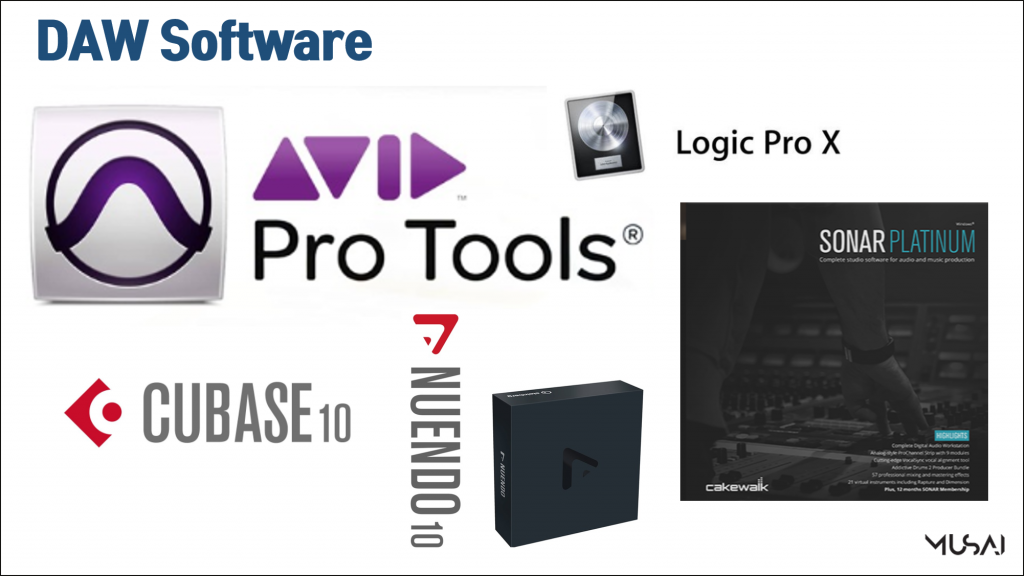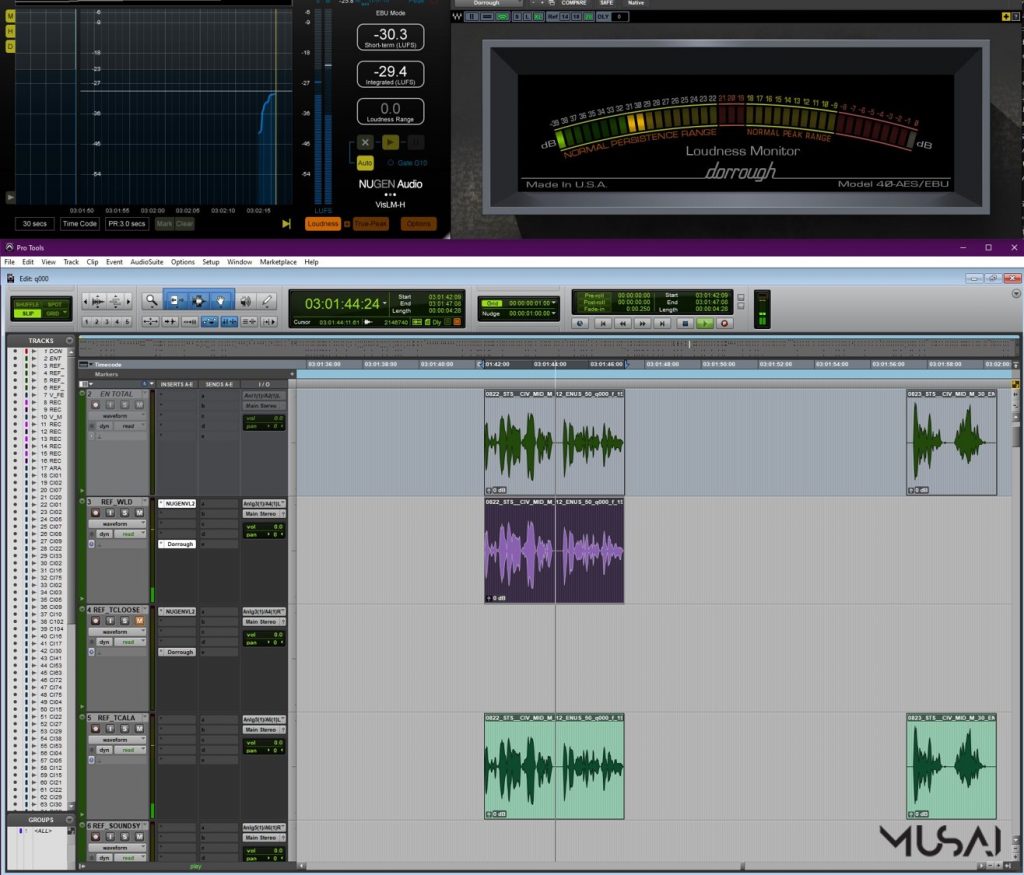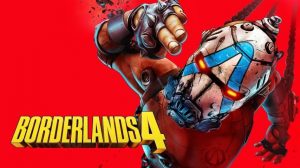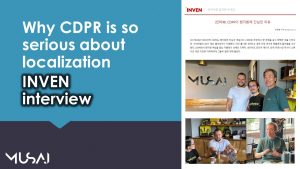[MUSAI] 10 Basic Game Dubbing Terms You Need to Know

2020-09-11
Have you ever happened to experience to be confused from the terms related to dubbing when you communicate with a recording studio? It’s lucky if you have your localization team who have knowledge about the dubbing process, but what if you don’t have someone to ask? Musai Studio is here for you to help. We picked 10 basic terms you need to know when you work on game dubbing.
1.Dubbing & Voice-over
When you refer to dubbing, it is a complete replacement of the original voice in a different language. Dubbing requires not only the delivery of the correct information but also acting with emotions, tones, and nuances to enrich the message. It is used by the entertainment industry for movies, games, and animation, etc.
Voice-over is more like a storytelling with the purpose to convey the information precisely in the background. It’s used for the informative contents such as news, documentaries, and instructional contents. Especially, with UN-style voice-over, the audience can hear both the original speech and translator’s voice simultaneously to interpret the message.
As for games, dubbing is more appropriate. However, dubbing and voice-over are intermixed and used as a same meaning globally including Korea.
2.Voice Casting
Casting is a process to choose a suitable voice actor who can fully express the individuality of characters in games. Artistic directors and casting directors are mainly in charge of the casting process and consider various attributes of voice talents such as acting style, voice color, experience, work ethics, etc. for the best cast. There are three types of the voice casting – studio casting, data base casting and live casting. (See more detail about casting. “Casting” – The first step for the successful Korean dubbing for your game http://blog.musaistudio.com/musai-casting-the-first-step-for-the-successful-korean-dubbing-for-your-game )
3.Artistic/Voice Direction
The process of Art direction may be different depending on the industry, but the general underlying role is to oversee and direct the creative aspects of any given project. The recordings are led by the Art Director, who has a significant impact on the overall quality of a game as he/she must have a great understanding of the gameplay style, story, characters, audience, and find the best way to convey those ideas through the performance of the voice actor. There is often an overlooked skill that is unique to Art Direction in a localization studio, which is the ability to understand region specific nuances and convey these cultural differences in the dubbed language in a way the audience can comprehend. The most important role of the Art Director is to lead the overall vision of the game by casting suitable voice actors and directing the vocal performance, pronunciation, and tone, to capture the best possible recordings.
4.BGM / Ambience
BGM: Background music. Audio with a melody runs throughout a video or image.
Ambience: Sounds which can express certain location or environment. For example, sounds from a cave, highway, airport, winds, etc.
5.Post-Production
Post-production refers to all the task occurring after the recording session ends. The purpose of the post-production is to make the sound satisfying audiences’ ears and get ready for delivery. It includes the technical process such as mixing, editing and mastering which means all the task ranging from polishing the sound, unifying the sound of a record to maintain consistency across all the files. Checking errors and naming convention of files need to be done in the post-production process.
6.Script Adaptation
Script adaptation means all the process to optimize the script for recording session. When modifying the lines, there are various factors to be considered such as length check with the reference audio file, conversational style, and the relationship between characters, etc. When you put enough time and effort on the script adaptation, it will enhance the overall quality of the work and a lot of merits on both cost and efficiency-side. (Check the link to learn more about the script adaptation. ‘All about ‘Script Adaption’ for Game Dubbing’ http://blog.musaistudio.com/musai-insight-all-about-script-adaptation-for-game-dubbing)
7.Recording Types
Wild / In-game: No time restrictions. In this case the target audio may be shorter or longer than the source audio reference, but it has to be ‘reasonably similar’.
TC (Time Constraint): Time restriction exists. There are two types,
- Time constraint ‘no longer than’ : Target audio files have to be “resonably shorter” but can’t be no longer of the source ones. Having the source reference is a must. Assuming that the translation has basically preserved the original text length.)
- Time constraint ‘as long as’: Target audio files have to be of the same length of the source one. Having the source reference is a must. Assuming that the translation has basically preserved the original text length.
SSYNC (Sound Sync): The target recording needs to match the internal pauses of the source audio files. Target text need to be carefully adapted before the recording.
Lip-sync: The time restriction is very strict. The characters in the video move the mouth and the target recording has to match the mouth movement. Target text need to be carefully adapted before the recording.
8.DAW
Digital Audio Workstation. It is a system for sound recording, editing, and mastering process. There are various brands such as Pro Tools, Nuendo, Cubase, Logic ProX, Sona, but most professional recording studios use Pro Tools.

9.PT/Session
Pro tools work session. A project file for recording in Pro Tools. Sorting in session files by voice-actors, quests, or file orders according to the project conditions and requirement.

10.dB, RMS, LUFS
dB – Decibel, unit of sound pressure measurement
RMS – Root Mean Square, average overall loudness
LUFS – Loudness Unit relative to Full Scale
These meters are technical terms in the audio industry. You don’t need to understand the exact definitions but should be aware that certain levels of them should be set for the project in order to make it sound comfortable for game-play and meet the specific requirements of the project.
** Did you enjoy the news of Musai? Please click subscribe and share the story.
BOOST YOUR PLAY! Musai Studio







